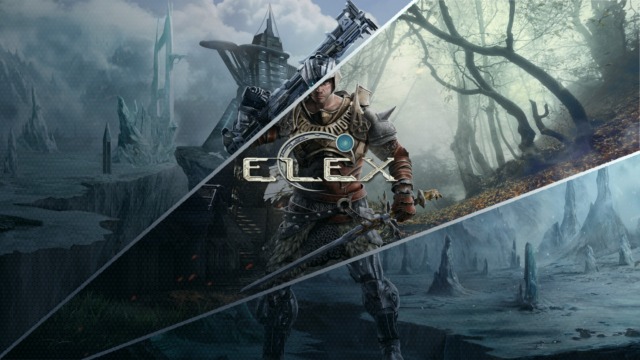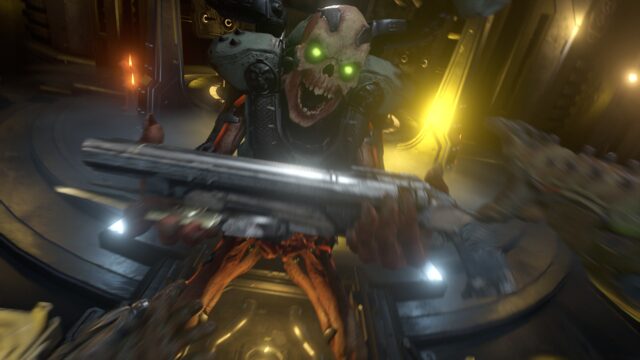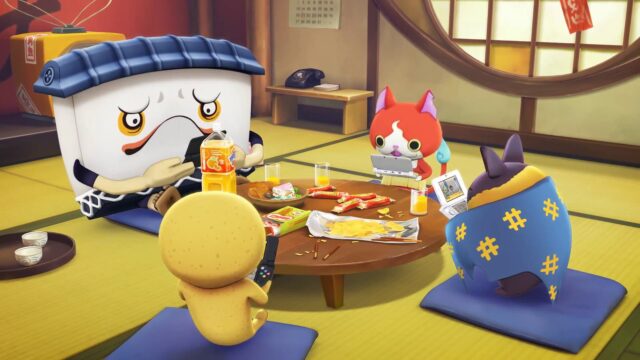Superhot Review
We somehow unknowingly succumbed to the general hype around Superhot. on the eve of its release By God, if you had asked us two years ago what we thought of the browser prototype of the game, we would have heard such rubbish as you only hear by the entrance on a weekend evening. The idea was great, but the planned implementation was sloppy, crooked, and exceptionally off-putting. And then the ugly duckling began to systematically acquire a sense of beauty, matured, and grew into what many, including us, have hardly slept over today. Mostly because of the delayed release, of course, but also because the result of three years of work by the authors impressed much more than expected.
Damn, even the upper paragraph was originally written entirely in uppercase. SUPERHOT, indeed.
We really hope that you understood what we were talking about, but just in case, we’ll explain. Superhot is a shooter that combines the dynamics of a first-class action movie and the ability to go to the store while a bullet is flying. Here’s how it works: you move – everything around moves and ordinary action takes place. But as soon as you stop – the world… well, it doesn’t freeze, but it lives a very, very slow life. The enemy double-barrel shotgun roars for a good half a minute, spewing a shotgun shell, glass fragments smoothly settle on the floor, and the red trail slowly approaches your temple so leisurely that you have time to notice it and do something about it. The outcome depends on the measures taken, whether you have to start the shootout again or not, because Superhot is also a game where everyone dies from a single hit.
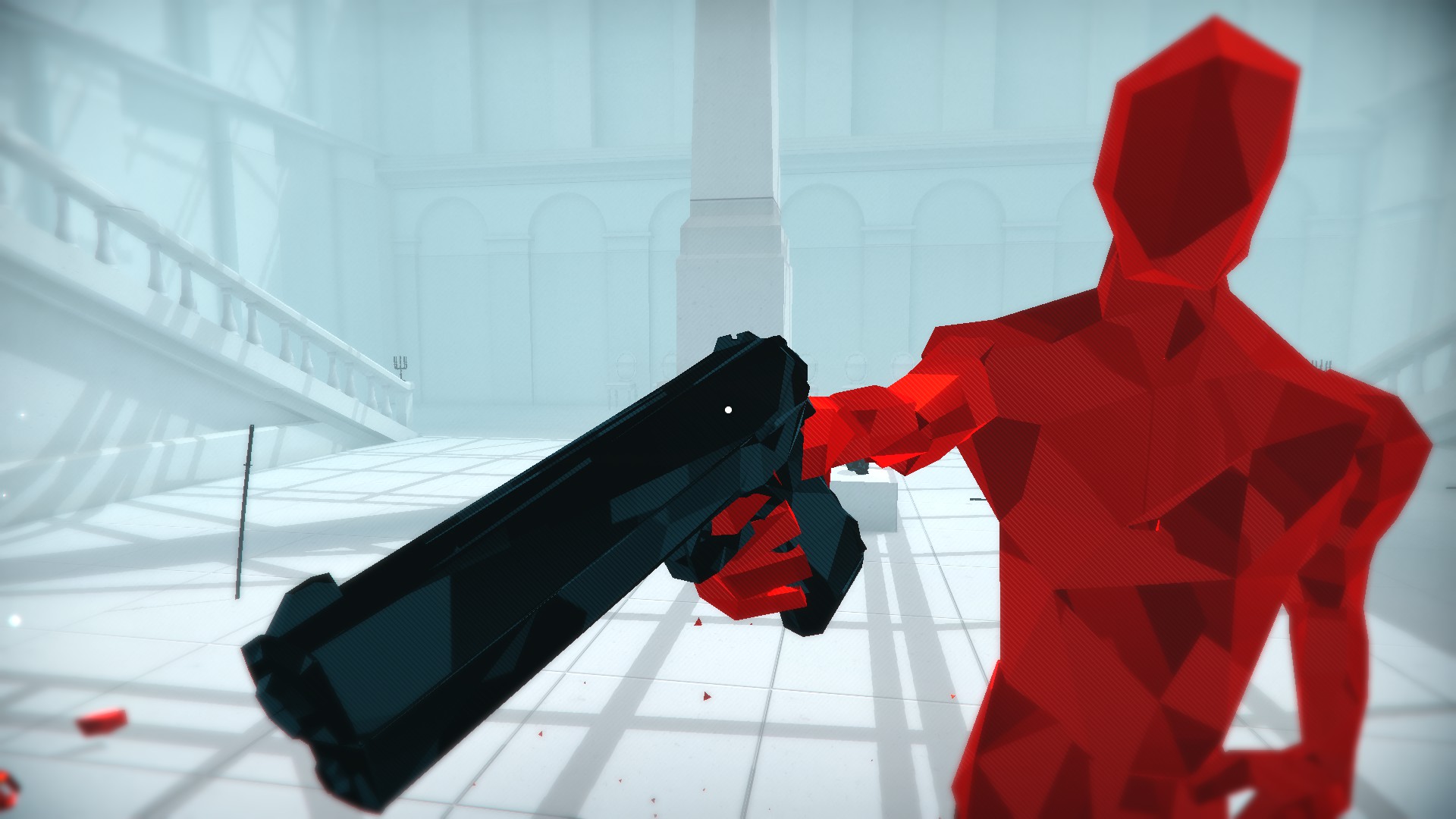
Wow, I’m itching to grab it! It’s the perfect time to take the toy away from the scoundrel.
The fragility of the protagonist serves as a counterbalance to time control and turns each level into a nonlinear tactical puzzle. Slow motion, in addition to aesthetic satisfaction, also has purely pragmatic benefits – without it, the likelihood of a favorable outcome in a shootout is practically zero. Only “slo-mo” allows you to fully assess the battlefield and calculate your reaction to the current threat, such as several assassins appearing behind you. In real time, you wouldn’t have time to turn around – Superhot allows you to plan a dozen possible scenarios, consult with friends, check the news feed, and then return to swiftly dispatch the offenders within a second of the game timer.
It may sound too simple, but in reality, this mechanic is played out in conditions where awareness and making the right choice matter much more than the ability to shoot accurately. Here’s a situation in an elevator. Three people have you in their sights. What do you do? Of course, make a sudden move and jump behind one of them, so that they take the fatal dose of lead from their comrades, grab the gun that flew up to the ceiling, and deal with the rest. Is that right? No. In an instant, triumph turns into defeat when the elevator doors treacherously open, exposing your back to a new wave of enemies. The bullet fired stealthily is faster. Try again.
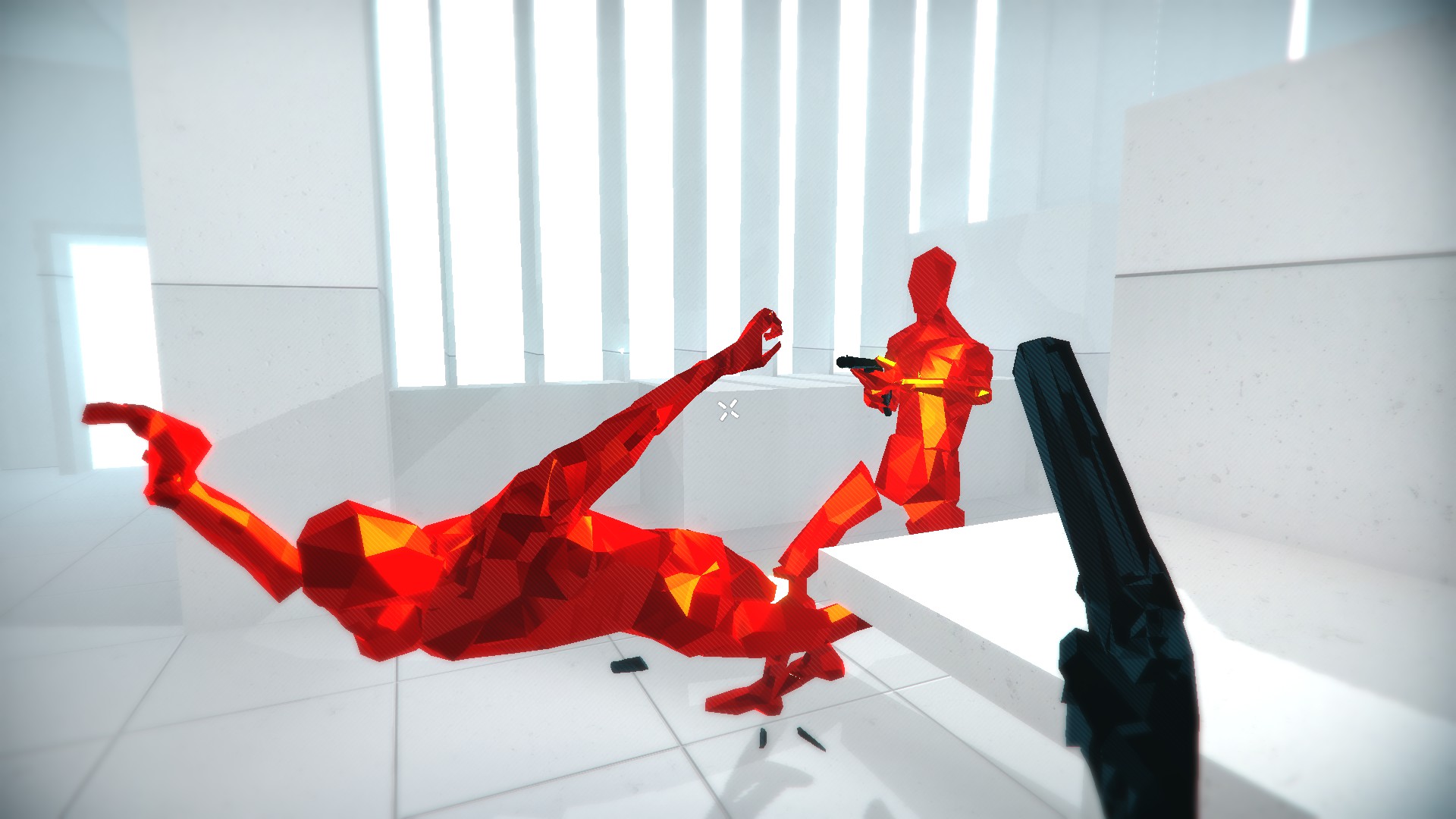
And so it is everywhere. The game loves beautiful shooting and smashed heads with a bat no less than you do, but in order for everything to work out, you often need to hold back the horses and think about the next move. This approach is fresh and pleasantly unfamiliar to the genre, which in recent years has focused on continuous action at the expense of challenge. Spoiled by health kits and health regeneration, we have already started to forget that enemies can actually kill, and that interiors should be used occasionally for gameplay purposes. Superhot reminds us of this, and in the most extravagant manner. The community has come up with a beautiful comparison that has already been snatched up by anyone who cares, and we are almost tempted to repeat it: it’s almost like a turn-based 3D version of Hotline Miami. Just as challenging, just as diverse and fast-paced – but at the same time, insanely spectacular.
The game’s stylistics were our main complaint about the 2013 prototype – now it has become one of the reasons to love it. Sterile minimalism with a clear love for all things glass has replaced the gray squalor. Windows, bottles, vases, even weapons and enemies here shatter like a grandmother’s china, peacefully scattering across the snowy interiors – and it looks stunning. There are no high-tech gadgets or design extravagance here, but the visual aesthetics are so harmoniously intertwined with the core mechanics that it surpasses even some “graphically advanced” counterparts in beauty and cinematography.

What really becomes a serious problem is artificial intelligence. When Dennaton filled their game with stupid enemies who mindlessly rushed towards us, it worked – Hotline Miami with its top-down view suited this stupidity perfectly. Here, however, the developers created numerous abstract but detailed locations, but did not tie the behavior of the enemies to them: they do not use walls to avoid gunfire, do not jump, do not crouch, do not throw empty guns – they just foolishly run around the player hoping to kill them. Meanwhile, the player gains a huge advantage, being able to take cover and throw makeshift objects, while opponents only pick up firearms and cold weapons. Well, these idiots become completely helpless if you simply wait for them in a corner: the red guys happily run after you and die like flies, unable to resist a persistent camper. The only exception are the “planted” guys, firmly positioned in scripted locations and acting according to a pre-prepared tactic.
Perhaps it’s a nitpick, but it immediately catches the eye as soon as the game runs out of interesting situations, and this happens too quickly. Personally, we completed the story campaign in exactly 100 minutes and, along with disgust for the horrible Polish rock in the credits, felt a sharp lack of “Superhot” in our system. The underlying story managed to take a sharp turn, break the fourth wall to pieces, and twist in an unconventional way – but we lacked scripted shootouts, spontaneous brawls in the club’s bathroom, and variations of a “Mexican standoff”. Instead, the developers offered to have fun in the additional survival mode and try ourselves in various challenges.
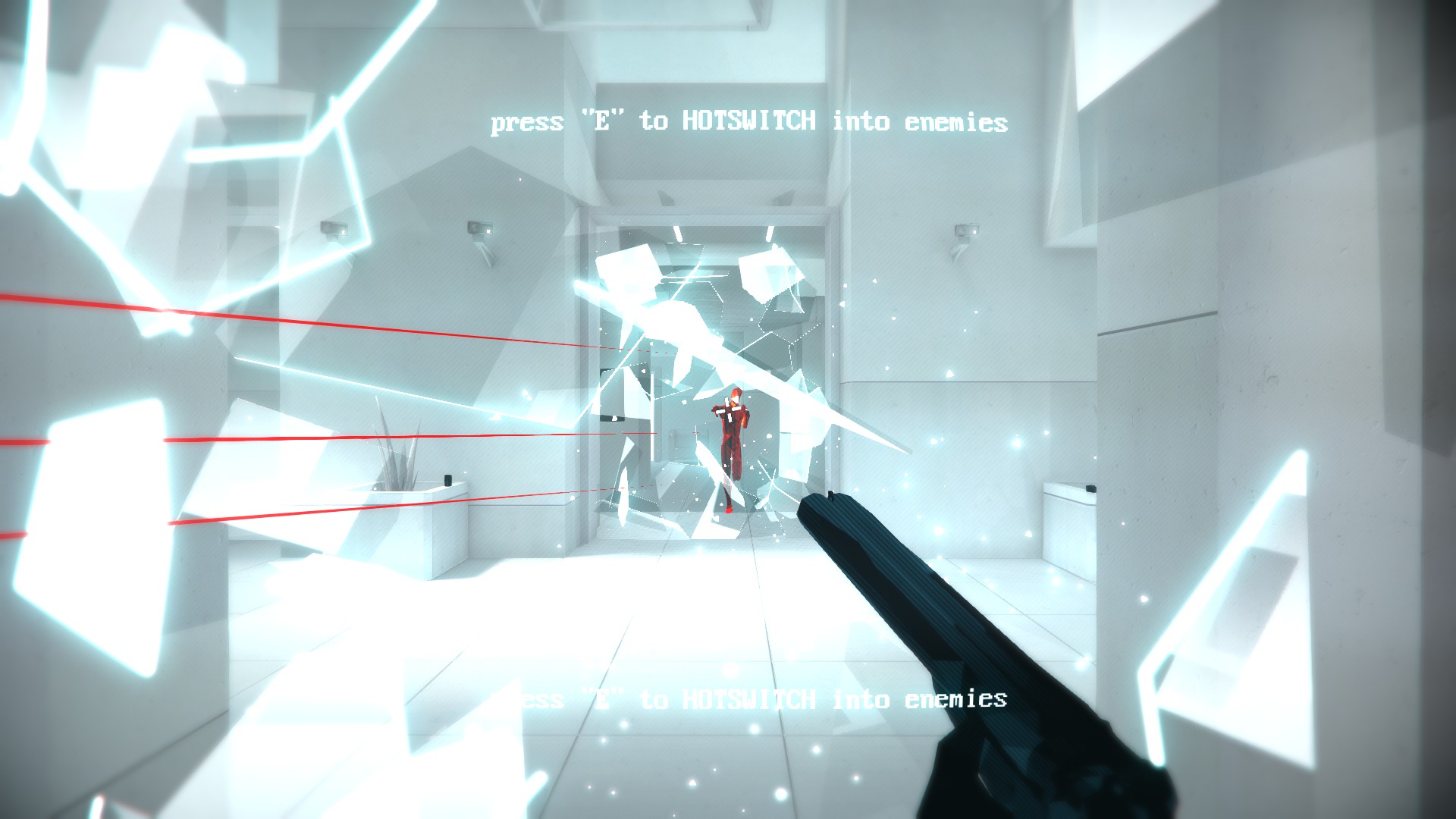
When there is absolutely nowhere else to go, it is better to exchange bodies with the enemy. That is also possible.
And you know what? Screw it, with the duration, artificial intelligence, and all that crap. For those who know how to, and more importantly, want to create a beautiful action, the game provides all the necessary means. The most delicious thing here is not just a completed level, but a short masterpiece that can be created by creatively approaching the task. Yes, it’s convenient to squeeze into a room and slice everyone with a katana, but how about impaling two enemies on the blade at once, grabbing a pistol, and, maneuvering under heavy fire, delivering a triplet of juicy headshots in mid-air? It takes time to achieve such feats, but performing complex tricks is much more enjoyable than dry score counting. The staging of shootouts is entirely in your hands, and nothing prevents you from playing out level scenes like John Woo or Tarantino, enjoying both the process and the subsequent replay. Only a dozen pigeons fluttering around the participants of the deadly ballet are missing.
Moreover, the highest skill is to do all this to music. Here is where there is truly uncharted territory for experiments. The game seems intentionally stingy on accompanying compositions, and after about 20 minutes, it becomes impossible to suppress the desire to play your own playlist. Don’t hesitate, turn it on! It has been tested in a five-hour marathon of endless mode – Superhot turns out to be an excellent visualizer of music of all kinds. The gameplay experience changes dramatically with each composition, and if you don’t unleash your own The Prodigy discography, then everyone, in our opinion, should appreciate the rapid action here set to “Ave Maria”. It’s insanely beautiful and cool.

In the end, it’s the most unpleasant. Firstly, all this stuff works unpredictably and unstably. Some owners of top systems suffer from terrible freezes and lower the resolution to 720p, while mid-range machines deliver flawless 60 frames in 4K. Patches are already flowing like a river, and right while writing this text, the game downloaded 96 megabytes of fixes. However, they didn’t help everyone.
Secondly, Superhot is not really worth the money they ask for it. Even considering all the innovations, unforgettable impressions, and distilled pleasure, the game is discouraging with its price tag of $20. Yes, we haven’t seen anything like this before. Yes, it’s a unique experience. But it’s still an experiment, an indie project, and whether it will last long in its current form is still unclear. And since we’re on the subject, the authors should actively support their creation with regular updates.
So, in the end, did Superhot turn out to be a good game? Definitely. Has its full potential been realized? Probably not. The luxurious mechanics work flawlessly in trials and arenas, but clearly deserve more content that would extend the project’s lifespan. A long campaign, a map editor, and mod support in Superhot 2 now top our gaming wishlist.
Share
Discuss
More Reviews
